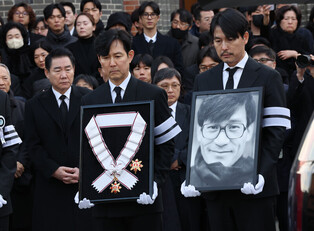* Editor's Note: According to the Korea Foundation's 2024 report, there are nearly 225 million Hallyu (Korean Wave) fans worldwide. With the advent of the "Digital Silk Road," transcending time and space, we are entering the era of "Hallyu 4.0." To help readers gain a fresh perspective on Korean culture and K-culture, the Yonhap News K-Culture Team has prepared a series of expert columns.
Shin Jong-geun's 'K-Liqueur' Story: Hwanggeumju and Gyeongju Silla Wine
Contributed by Shin Jong-geun, exhibition planner and columnist (author of "Art and Liquor")
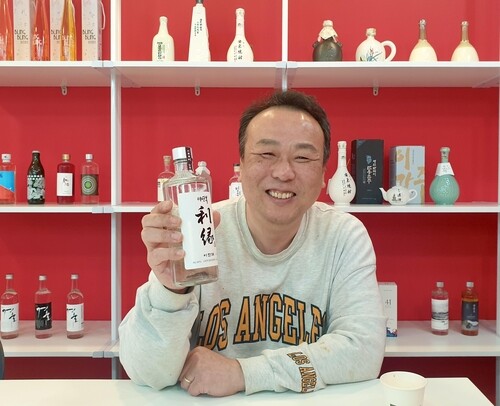
The unification leaders of the Three Kingdoms period, King Taejong Muyeol (Kim Chun-chu) and General Kim Yu-sin, both have anecdotes tied to alcohol.
According to Samguk Yusa (Memorabilia of the Three Kingdoms), King Taejong Muyeol was described as a hearty eater who consumed six mal (a traditional Korean unit of measure) of rice, six mal of alcohol, and ten pheasants daily. Another tale from Kim Yu-sin's youth as a Hwarang recounts how his horse, while he slept on it, instinctively wandered to a tavern. Realizing this, Kim reportedly cut the horse's neck in anger.
During King Heongang’s reign in Silla, the capital Seorabeol prospered so much that the eaves of tiled houses seemed to interconnect across the city. In 882, King Heongang stood on Wol-sang Pavilion in Banwolseong Palace and sang a song inspired by the tiled rooftops resembling flocks of geese in flight.
Silla annals in Samguk Sagi (History of the Three Kingdoms) record that during this period of prosperity, Seorabeol’s people brewed and enjoyed chrysanthemum-infused wine, dancing and singing day and night. This wine was known as Hwanggeumju ("Golden Wine").
Silla’s alcoholic heritage undoubtedly included traditional liquors. What kind of drink was Hwanggeumju, reportedly favored by King Muyeol and sold in the taverns frequented by Kim Yu-sin’s horse?
In China, renowned Tang Dynasty poets Li Bai and Du Fu were collectively called Da Li Du (Great Li and Du). Similarly, in the late Tang period, poets Du Mu and Li Shangyin were known as Xiao Li Du (Lesser Li and Du). Li Shangyin’s poem "Gongzi" in his collection Quan Tang Shi mentions Silla wine:
"I fear the morning breeze will dissipate the intoxication from a single cup of Silla wine (一盞新羅酒 凌晨恐易消)."
The Joseon-era historical text Haedong Yeoksa (Korean History), compiled by Han Chi-yun and his nephew Han Jin-seo over 20 years, includes references to Silla wine. It notes that Silla wine, mentioned in Li Shangyin’s poem, was similar to the Goryoju made from rice in the Goryeo Dynasty.
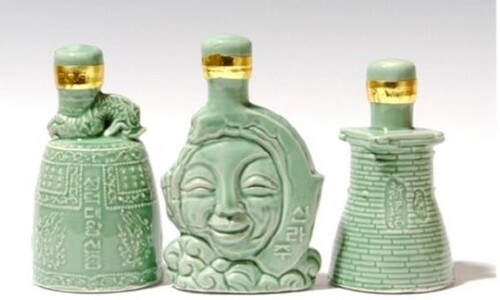 |
| ▲ This photo, provided by the author, shows Gyeongju Sillaju. (Yonhap) |
These records reveal that Silla wine was widely known in China and enjoyed by its people. It is speculated that Silla wine resembled Chinese yellow wine (huangjiu), a fermented brew with a similar alcohol content.
In modern times, Lee Jin-wan of Gyeongju has been researching ancient texts to recreate the famed Silla wine. He successfully produced a version called Gyeongju Silla Wine, which captures the flavors and aromas of a thousand years ago.
In 1987, while working as a managing director at Shilla Development Co., Lee developed a 14% alcohol beverage named Hwanggeumju. This early version of Silla wine was a sedimented brew, extracted by fermenting raw materials and filtering them.
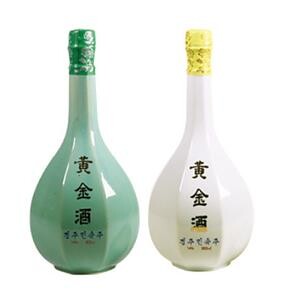 |
| ▲ This photo, provided by the author, shows Hwanggeumju. (Yonhap) |
In 1990, Hwanggeumju was officially registered as a traditional folk liquor with the National Tax Service, alongside other traditional brews like Igangju and Chilseonju. However, it struggled to maintain its legacy due to failing to meet the "20 years of production" criterion for folk liquor and financial difficulties following the owner’s bankruptcy.
In 1995, Lee Jin-wan obtained a new license for traditional liquor production and developed Silla Wine in 1998. Silla Wine elevated Hwanggeumju to a distilled spirit through an additional soju distillation process.
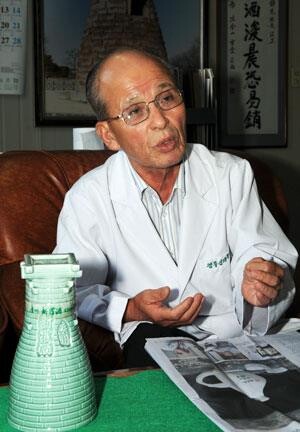 |
| ▲ This photo, provided by the author, shows Lee Jin-hwan, who developed Hwanggeumju and Sillaju. (Yonhap) |
The National Tax Service conducted a five-year analysis of traditional liquors nationwide to select the finest examples, and Gyeongju Hwanggeumju won first place. As a reward, Lee received a license to produce distilled liquor, enabling him to revive Silla Wine.
The recreated Gyeongju Silla Wine is a 30% ABV distilled spirit made from glutinous rice, regular rice, wolfberries, and chrysanthemums. Its distinct flavor and aroma are rooted in Lee’s desire to revive the cultural essence of the Silla era, inspired by the Tang Dynasty poet Li Shangyin’s mention of Silla wine. Over years of collecting historical records and conducting research, Lee succeeded in this revival.
In 2007, at the 11th Gyeongbuk Tourism Souvenir Contest, Gyeongju Silla Wine won the grand prize. It was celebrated for its creativity and marketability, presented in miniature bottles shaped like Gyeongju’s cultural treasures such as Cheomseongdae, the Sacred Bell of King Seongdeok, and the smile of Silla.
As Lee approached retirement, he chose Han Dong-hwan, a man the same age as his youngest son, to continue the craft. Lee made the initial proposal, and Han, previously an interior designer, decided to change his career after much consideration. Although the traditional liquor market remained challenging, Han’s efforts gradually increased sales through channels like post office shopping, hotels, duty-free shops at airports, and military supplies.
Tradition holds significance when preserved. Hwanggeumju and Gyeongju Silla Wine, embodying a millennium of Silla history, are proud symbols of Korea’s rich heritage.
(C) Yonhap News Agency. All Rights Reserved




















